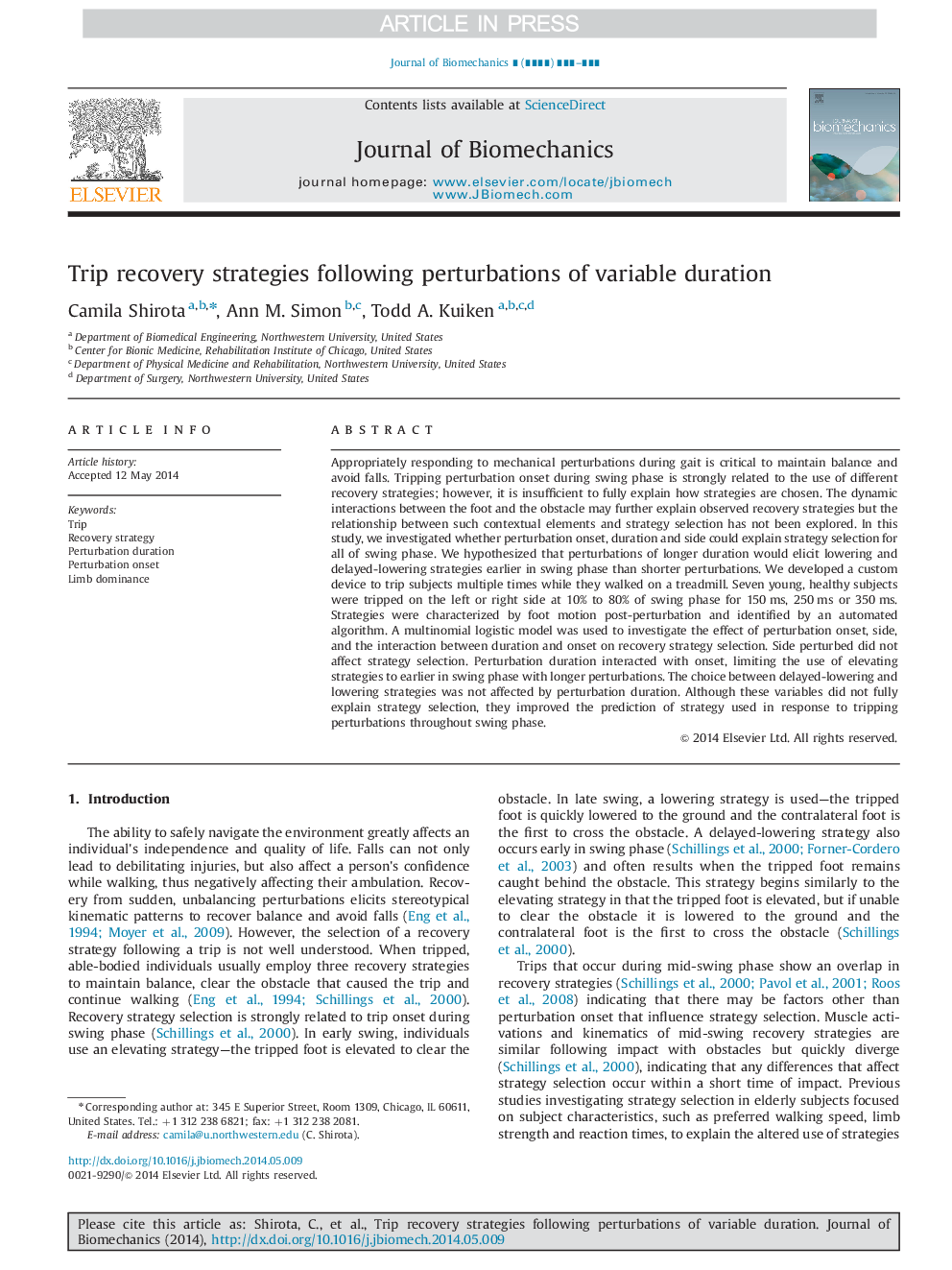| Article ID | Journal | Published Year | Pages | File Type |
|---|---|---|---|---|
| 10431848 | Journal of Biomechanics | 2014 | 6 Pages |
Abstract
Appropriately responding to mechanical perturbations during gait is critical to maintain balance and avoid falls. Tripping perturbation onset during swing phase is strongly related to the use of different recovery strategies; however, it is insufficient to fully explain how strategies are chosen. The dynamic interactions between the foot and the obstacle may further explain observed recovery strategies but the relationship between such contextual elements and strategy selection has not been explored. In this study, we investigated whether perturbation onset, duration and side could explain strategy selection for all of swing phase. We hypothesized that perturbations of longer duration would elicit lowering and delayed-lowering strategies earlier in swing phase than shorter perturbations. We developed a custom device to trip subjects multiple times while they walked on a treadmill. Seven young, healthy subjects were tripped on the left or right side at 10% to 80% of swing phase for 150Â ms, 250Â ms or 350Â ms. Strategies were characterized by foot motion post-perturbation and identified by an automated algorithm. A multinomial logistic model was used to investigate the effect of perturbation onset, side, and the interaction between duration and onset on recovery strategy selection. Side perturbed did not affect strategy selection. Perturbation duration interacted with onset, limiting the use of elevating strategies to earlier in swing phase with longer perturbations. The choice between delayed-lowering and lowering strategies was not affected by perturbation duration. Although these variables did not fully explain strategy selection, they improved the prediction of strategy used in response to tripping perturbations throughout swing phase.
Keywords
Related Topics
Physical Sciences and Engineering
Engineering
Biomedical Engineering
Authors
Camila Shirota, Ann M. Simon, Todd A. Kuiken,
